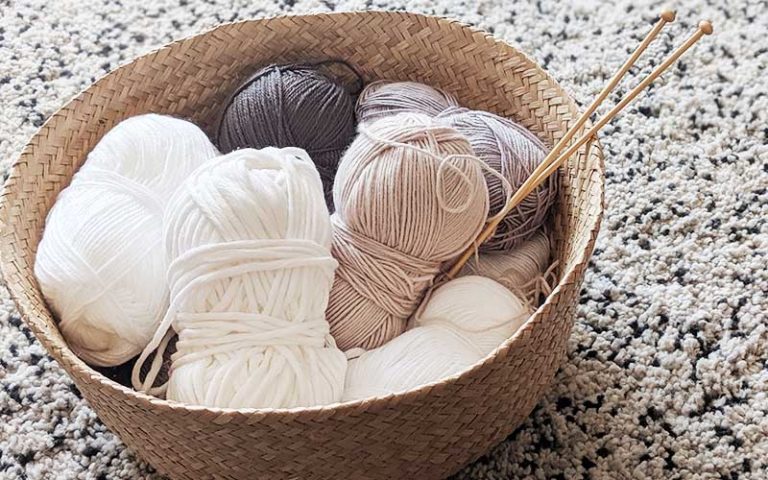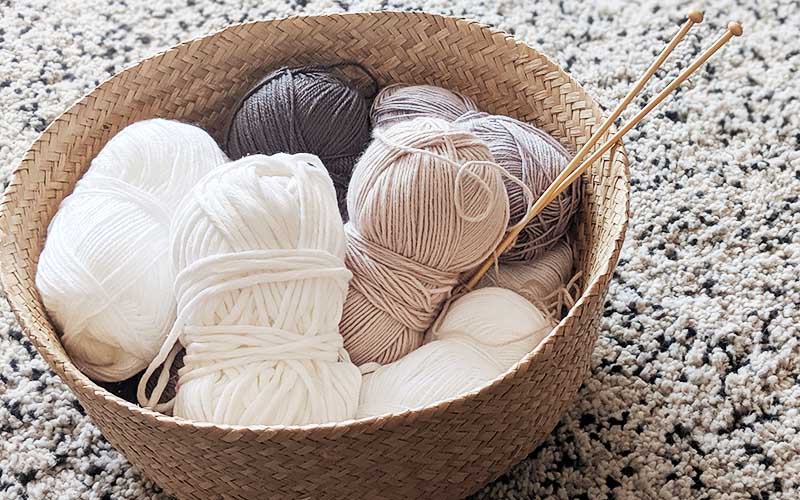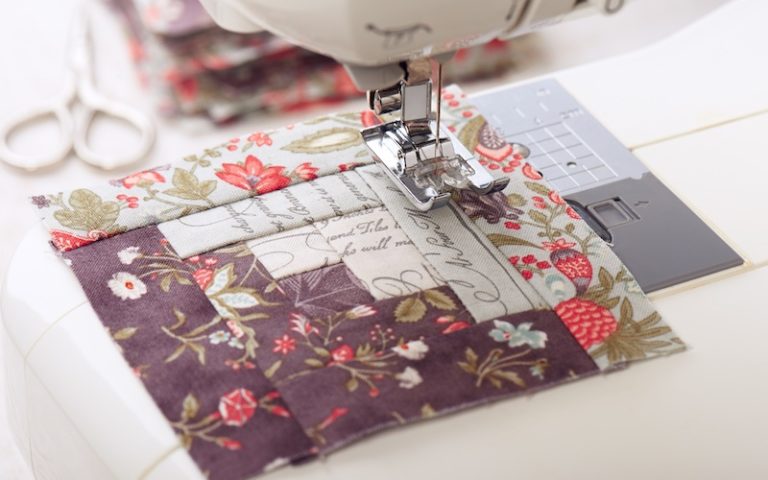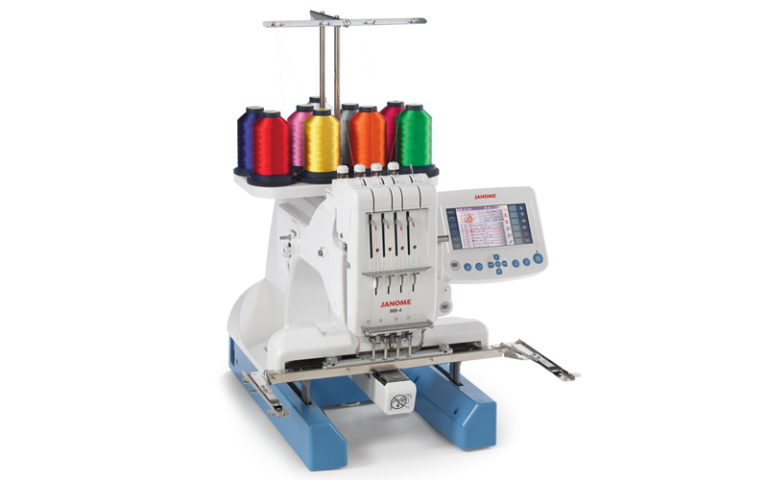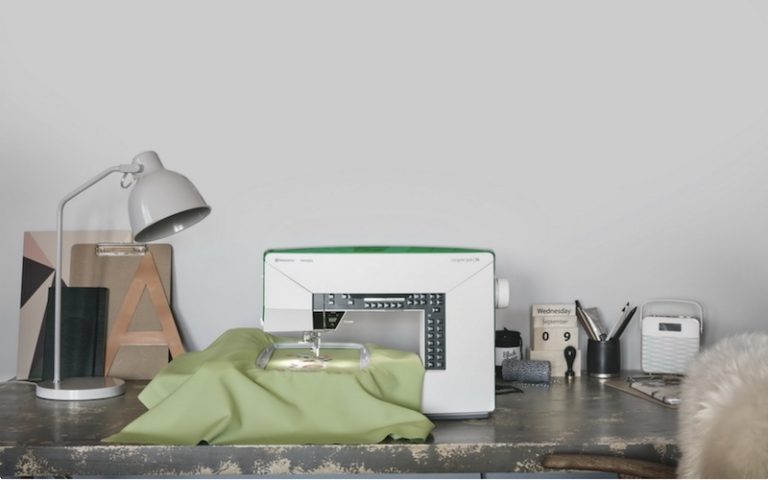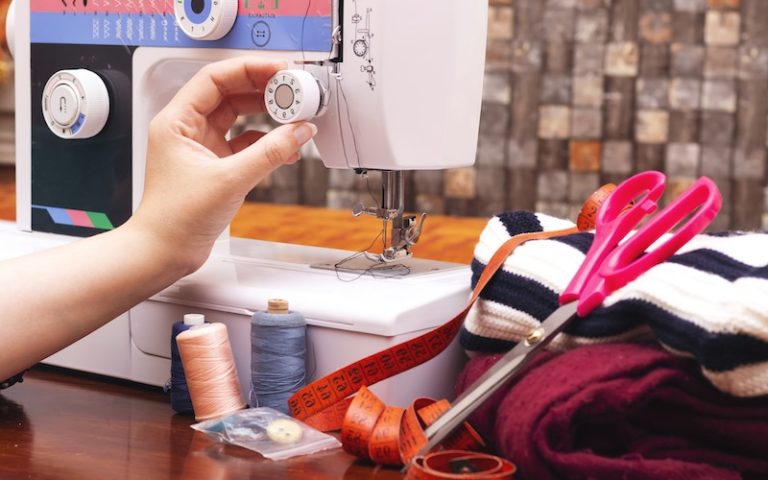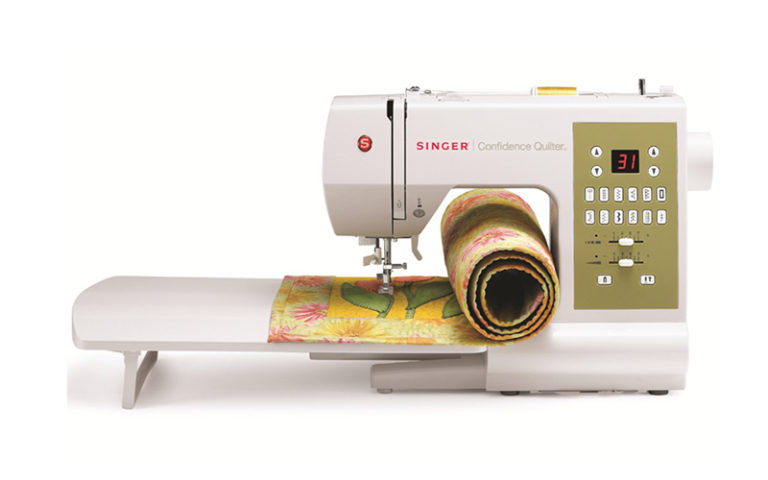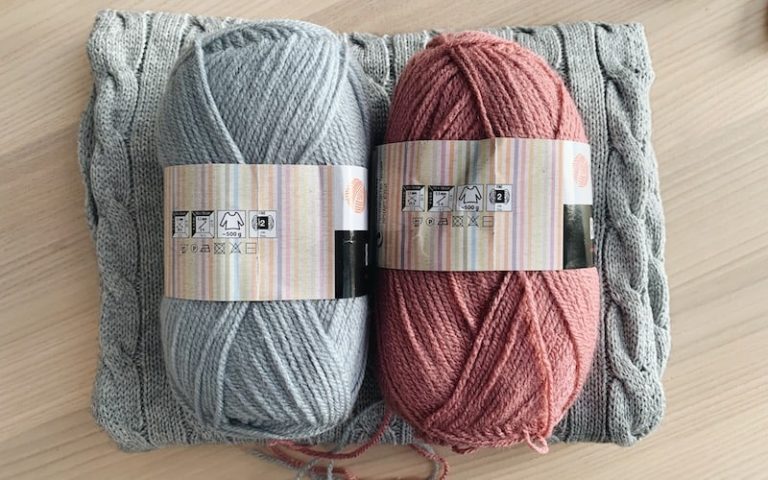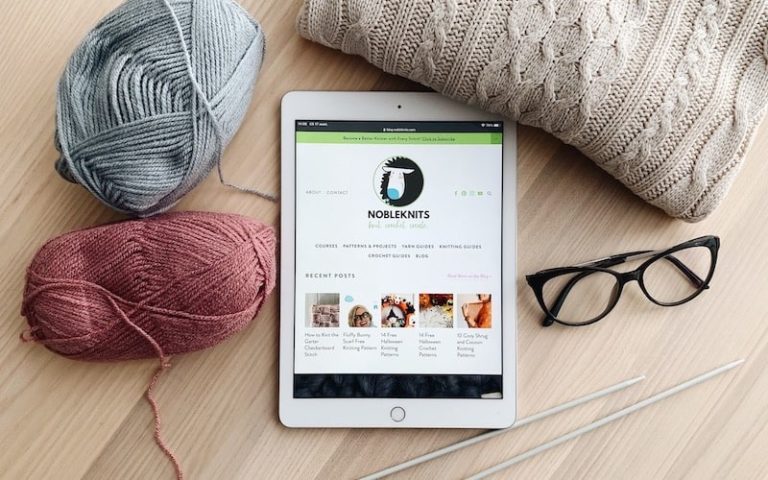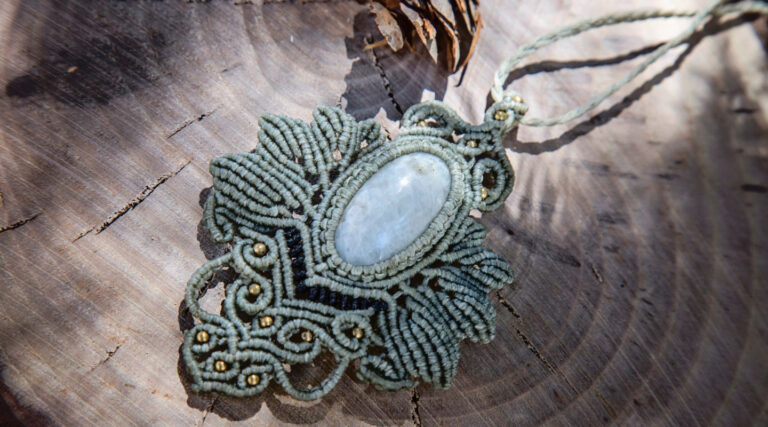Learning all the different characteristics of yarn can seem like an impossible task. With so many varieties available, it’s easy to get overwhelmed. Even the packaging is confusing!
In this post, we will tell you everything you need to know about yarn, including the different types and sizes, when to use which type, and even how to read that tricky back label.
Common types of yarn
Yarn comes from many different sources. Some are made naturally from animal fur or plant fibers, some are produced from plastics and other synthetic materials, and some are made from a combination of natural and manmade substances.
Each type of yarn has its own drawbacks and benefits, so let’s take a quick look at the different varieties.
Wool
Cost: $$
Wool yarn is spun from sheep fiber and has been used for centuries. Wool is insulating and resistant to moisture, so it is a versatile choice that will keep you warm in the winter and sweat-free in the summer.
It is great for everything from socks to sweaters to blankets, so it is always easy to find a project to fit this fiber.
Wool is one of the easiest yarns to knit with as it is stretchy enough to avoid breakage and textured enough to grip the needles. As such, it is an excellent choice for beginners, and its lower price point means that it won’t matter too much if you mess up the yarn while you’re learning.
Wool quality is an important factor to consider when choosing a yarn. Some wool can feel scratchy against the skin, so experiment with a few different types to see which brands work best for you.
Care: Hand wash in warm water.
Merino
Cost: $$$
Merino is a special type of wool that comes from merino sheep. It has all the same benefits of regular wool, but it tends to be silkier in texture. This makes it a better option for things that will have a lot of contact with the skin.
However, since merino is so much softer, it also tends to be more expensive.
Care: Hand wash in warm water.
Wool Blend
Cost: Varies
Wool blend is exactly how it sounds: wool blended with other fibers. Sometimes regular wool is mixed with merino or some other luxurious natural fiber to create softer yarns at a lower price.
Other times wool is mixed man-made fibers to give the wool more durability, a different texture, or more resilience in the washing machine.
Care: Varies depending on which fibers are used.
Alpaca
Cost: $$$
Alpaca yarn is made from the fiber of the animals of the same name. Alpaca fur is soft, insulating, and hypoallergenic.
The yarn produced from this fiber is softer and warmer than wool, and it is much gentler on the skin. This makes it the perfect option for sweaters, shawls, blankets, and baby items.
Alpaca yarn tends to wear out more quickly than wool, so it is not a good option for socks or other items that will encounter a lot of friction. It also doesn’t fare well when exposed to moisture, so it shouldn’t be used for anything that will be exposed to a lot of sweat or rain.
Care: Dry clean.
Cotton
Cost: $
Cotton yarn is spun from the fluffy fibers of the cotton plant. It is soft, inexpensive, and readily available.
Cotton yarn is ideal for things like dish cloths and hand towels, due to its great absorption qualities It also holds its shape well and does not felt and pill like wool, so it is great for trying intricate patterns and stitches.
Since it is made from plant matter, cotton yarn is a good choice for vegans who want a natural yarn but would prefer to avoid those made with animal by-products.
Care: Machine wash.
Cashmere
Cost: $$$$
Cashmere yarn is spun from the hair of pashmina goats. It is one of the softest yarns available and is considered a luxury fiber.
Cashmere is almost always mixed with other fibers when made into yarn, since cashmere is so expensive by itself. It is warm and comfortable, so it is best suited for projects like sweaters and cardigans.
Care: Dry clean.
Angora
Cost: $$$$
Angora yarn is made from the fur of angora rabbits. Like cashmere, it is a soft, luxurious fiber that is almost always blended with other substances when made into yarn.
Angora is incredibly warm and has superior insulation, so it is well-suited for winter projects like sweaters, hats, and scarves. While pure angora yarn is a luxury, it is actually better to buy a blend instead, since angora is so difficult to knit with.
Care: Dry clean.
Mohair
Cost: $$$$
Mohair is another high-end animal fur yarn that makes lavish knitted pieces. It is spun from the hair of angora goats and is most often used in yarn blends to make them shinier.
Mohair is lightweight, lustrous, and takes on dyes well. It is a great option for sweaters, scarves, gloves, hats, and anything else that keeps you nice and toasty in the cold. Its high elasticity means that your sweater will keep its shape for many years, but you won’t be able to do any fancy stitchwork since mohair is so fluffy.
Care: Dry clean.
Acrylic
Cost: $
Acrylic is a synthetic yarn made from a blend of thin plastic fibers. It is one of the most common types of yarn and dominates the shelves of most craft stores. It is the least expensive yarn on the market, so it tends to be many knitters’ first choice when making a large project like an afghan.
Acrylic is easy to knit with, has little restrictions for washing or caring for it, and holds its shape better than wool. As such, it is a great choice for beginners and is the yarn that many knitters and crocheters turn to when learning.
It can be scratchy and irritating when worn next to the skin, so it is not the best choice for things like sweaters, mittens, scarves, or baby items.
Care: Machine wash.
Nylon
Cost: $
Nylon is another man-made fiber that is often spun into yarn. It is a thermoplastic that can be manipulated to mimic the texture and characteristics of several different natural fibers. It is often used in yarn blends to make expensive materials like angora and cashmere available at a lower price.
Nylon does not retain heat well, so it is best suited for light summer projects or non-wearables unless it is mixed with a more insulating material like alpaca or mohair.
Care: Machine wash.
Rayon
Cost: $$
Rayon is a man-made fiber synthesized from natural plant matter such as wood and bamboo. Like nylon, rayon does not retain heat, so it is ill-suited for warm winter projects like sweaters and scarves.
Care: Machine wash.
Silk
Cost: $$$$
Silk yarn is made from the cocoon strands of the silkworm. It is smooth and luxurious to the touch and is mostly used in lightweight designs like lacy shawls and summer scarves.
Care: Dry clean.
Polyester
Cost: $
Polyester yarn is made from synthetic fibers similar to nylon and acrylic. Most of the yarns marketed as “baby afghan” yarns are made from polyester.
Those yarns tend to be soft and have decent insulation, so they are well suited for baby blankets, sleepers, and similar projects.
Care: Machine wash.
Organic
Cost: Varies
Organic yarns are any yarns made without the use of chemical agents like herbicides and pesticides. Yarns made from plant fibers must be grown using the set standards of organic farming, while yarns made from fur and wool must be harvested from animals who are fed a fully organic diet.
Care: Varies depending on which fibers are used.
Self-Striping
Cost: Varies
Self-striping yarns are skeins that are dyed two or more colors. Self-striping yarns are designed to form stripes or patterns as you knit. Any fiber that retains dye can be turned into a self-striping skein, but they are most commonly seen in synthetic yarns like acrylic and polyester.
Care: Varies depending on which fiber is used.
Yarn sizes
Yarn comes in seven distinct weights, numbered from 0 to 6. Yarn weight refers to how thick a single strand is, with lace being the thinnest and super bulky being the heaviest.
The Craft Yarn Council has created a standard system to categorize yarn wewight.
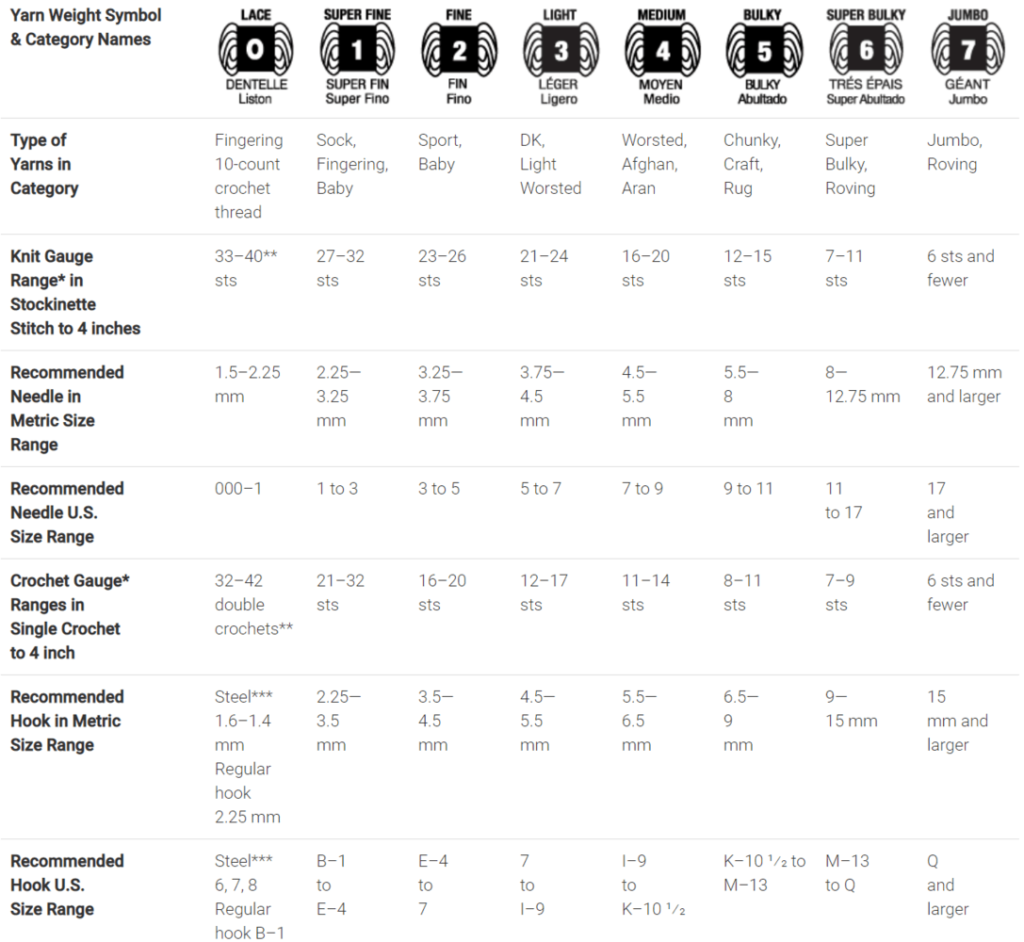
- #0 – Lace: A 1-ply yarn that is used primarily for lace and other gauzy patterns.
- #1 – Super Fine (Sock): A 4-ply yarn that, as its name implies, is best suited for knitting socks.
- #2 – Fine (Sport): A 5-ply yarn that can be used for lace, socks, and baby items.
- #3 – Light: An 8-ply yarn that is used for socks, baby items, gloves, and hats.
- #4 – Medium (Worsted) – A 10-ply yarn that is the most widely available yarn weight and is suitable for most projects.
- #5 – Bulky: A 12-ply yarn that is used for heavy scarves, slippers, and afghans.
- #6 – Extra Bulky: A 14-ply yarn that is used for heavy afghans, rugs, arm knitting, and more.
How to read the label
The label is quite possibly the most confusing part of the whole yarn buying process; however, once you understand how to decipher the guide on the back of the label, you will have all the information you need to use that yarn in a project.
A typical yarn label has five elements that are important to know and understand before buying:
Weight
The yarn label will have a picture of a small yarn skein with a number in the middle. The number corresponds with the yarn’s weight, so if you picked up a skein of worsted weight yarn, it would have a 4 in the icon.
This is the easiest way to tell how thick the yarn is and what sort of project the yarn would be suitable for.
Needle/Hook Size
Near the first icon, there will be two more small pictures: one with a set of knitting needles and the other with a crochet hook. These tell you what size knitting needles or crochet hook you need to use with that particular yarn weight.
In our worsted weight example, the knitting needle icon would have an 8 next to it, and the crochet hook would have an I next to it. Those sizes will give you the best results.
You can use a smaller or larger size than what is on the label, but the resulting fabric will either be denser or looser depending on which size needles or hook you choose.
Material
Your yarn label should tell you the composition of the fibers in the skein. Yarn manufacturers will often blend two or more types of fiber together in order to achieve certain results.
Blends can help yarn makers improve unwanted characteristics of certain fibers (such as adding strength or elasticity to a fiber known for breakage) or to make textures that are impossible to achieve with a single type of fiber.
The label will list what percentages of which fibers are in your yarn. If the yarn is completely wool, the packaging will obviously disclose that the yarn is 100% wool. However, if they added other fibers, such as nylon, the label would read something like: 85% wool, 15% nylon.
It is important to double-check the material composition if allergies are an issue, to avoid any adverse reactions.
Care Instructions
We briefly touched on how to care for each type of fiber in the section above, but the yarn packaging will give you a more detailed explanation of your particular yarn’s needs.
Some yarn blends are formulated to give knitters better cleaning options for their finished pieces, so always check the label before attempting to wash your knitting project.
Gauge
Your yarn label will typically tell you what your gauge should be. Gauge is the number of stitches per inch, so the label will tell you roughly how many stitches you will have to knit to produce an inch of fabric with the recommended needle size.
Gauge is important for making sure your projects are sized correctly. If you were making a sweater, you could more accurately assess how many stitches to cast on by calculating how many inches in diameter you want the sweater to be and times it by how many stitches make up an inch of fabric.
It is worth noting, though, that the gauge on the packaging is just a rough guide. Gauge differs for everyone, since one knitter might knit tighter stitches than someone else. Always knit a test swatch to check for your actual gauge.
How to choose the right type of yarn
There are several factors to consider when choosing a yarn for a project. If you are using an existing pattern, the creator already did the hard work for you. Use whatever materials they recommend in order to get the best results.
If you are creating your own pattern or trying to modify an existing one, you will need to determine what materials will produce your desired results. Think about how it will be used.
Is the project meant to be worn in winter? Or summer? Do you want it to drape nicely or to firmly hold its shape? Should the resulting fabric be loose or dense? Will it be worn close to the skin? Does the recipient have an allergy to any fibers or furs? How often will it need laundered?
Once you can answer those questions, it is easy to figure out which yarn that will best suit the project.
And if you want to go back to the basics and find out how knitting was invented, check out our post about the history of knitting.
Well, that’s everything you need to know about yarn! Still have questions? Let us know in the comments below.

